I’m back with Part 2 of this blog mini-series, where I’ll be focusing on Instagram for business. Broadly, I’ll discuss how to gain exposure organically. In other words, this means growing your following using tactics outside the realm of paid advertising.
Keep Business, Business
If you’re doing business with any regularity on social media, you’ll want to have a business account. Not only is this better for SEO purposes, but it grants you a few unique tools to help manage your account. Unless you’re looking to become an Instagram influencer, keep your work stuff separate from your personal life updates. The audience looking to buy a house is very different from the audience who wants to see how your sister’s birthday went.

What’s in a name?
Instead of just putting “Brandon Perez” as the name for my real estate business account, I can say “Brandon Perez – Real Estate Agent”. This allows my business page to show higher in the search results when people search for something related to real estate.
Disclaimer #1: This doesn’t mean you’ll show up at the top of the search results; it takes a lot of time and effort to get there.
Disclaimer #2: “Real Estate Agent” may not be the best add-on, so you’ll have to try a few different ones to know what works for you. It’s all about what gets you the most exposure!
Tag, You’re It
Tagging your posts can be a game-changer for your brand’s exposure on Instagram. The secret, however, lies in finding the right tags. I’m sure you’ve seen countless posts littered with hashtags, bearing no rhyme or reason. This is no way to gain a following.
A little #house hashtag on a post about your recent listing might garner a couple extra eyeballs. But social media branding is a numbers game, and the exposure you’re looking for doesn’t come that way. It’d be nice if that hashtag grafted you into Instagram’s family tree of #house posts, and whenever someone searched #house, they saw your recent listing post.

But that’s not how it works. In reality, your post gets buried beneath tons of other #house posts by Instagram’s omnipotent algorithm.
I imagine you’re wondering, “What hope is there for me, one who sells houses but cannot use the #house hashtag?” Come hither, poor soul. There is hope!
The nitty-gritty
So, the reason your post would get buried beneath other #house posts is because there are, undoubtedly, tons of posts with the same hashtag that get more engagement than yours. (Engagement is simply the number of likes and comments a post receives.) Instagram’s algorithm features the most engaging content at the top of search results.
As mentioned earlier, you’ll want to find the right hashtags. This will mean hashtags that are more niche: having less widespread popularity and more relevance to your particular post. This is a surefire and efficient way to grow your following, but it does take time and effort. If you’re up for the challenge, let’s walk through how to find these gold nugget hashtags.
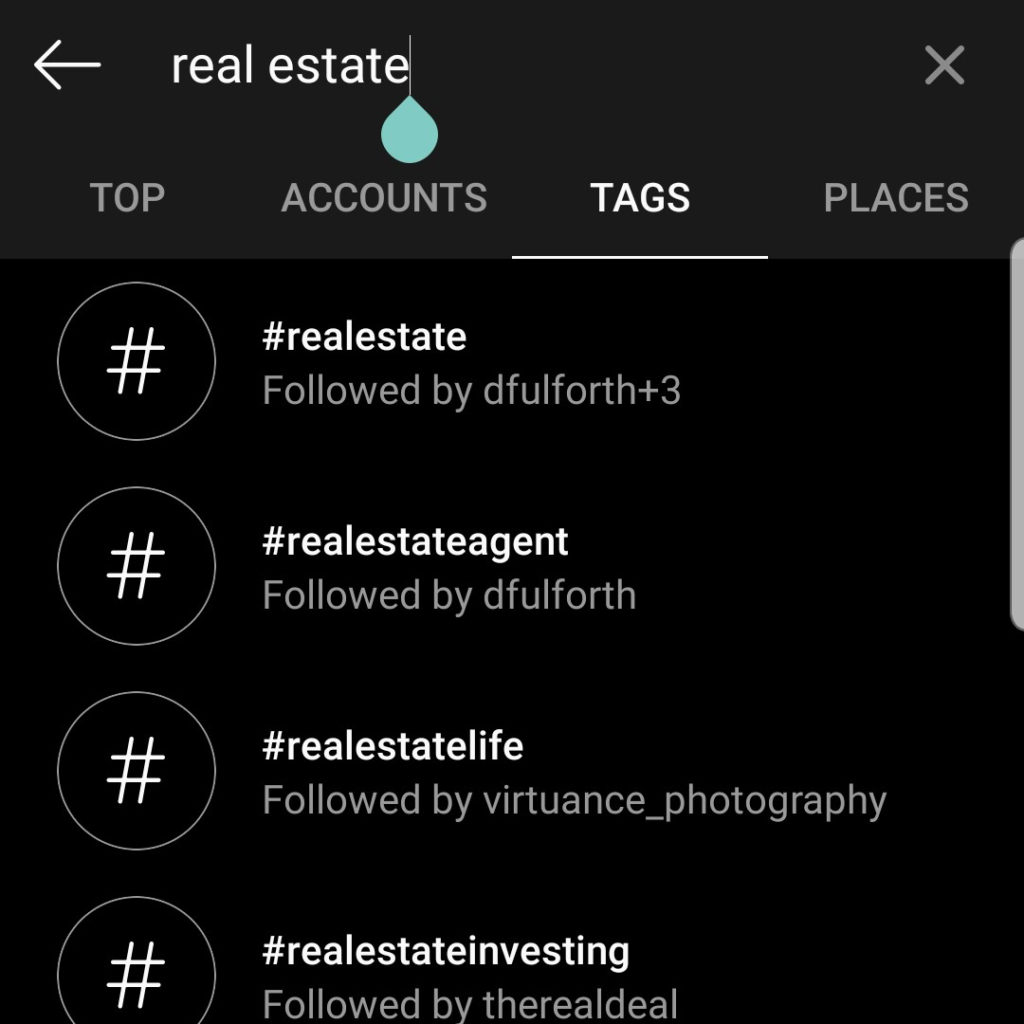
Start broad. Search something like “real estate”. Most likely, you won’t be able to compete in this hashtag arena yet, but you can at least gain an idea of who is. (Also, this will lead to other more useful hashtags. Read on to learn how.)

Browse through the “top” posts, and get an idea of the average number of likes they get.
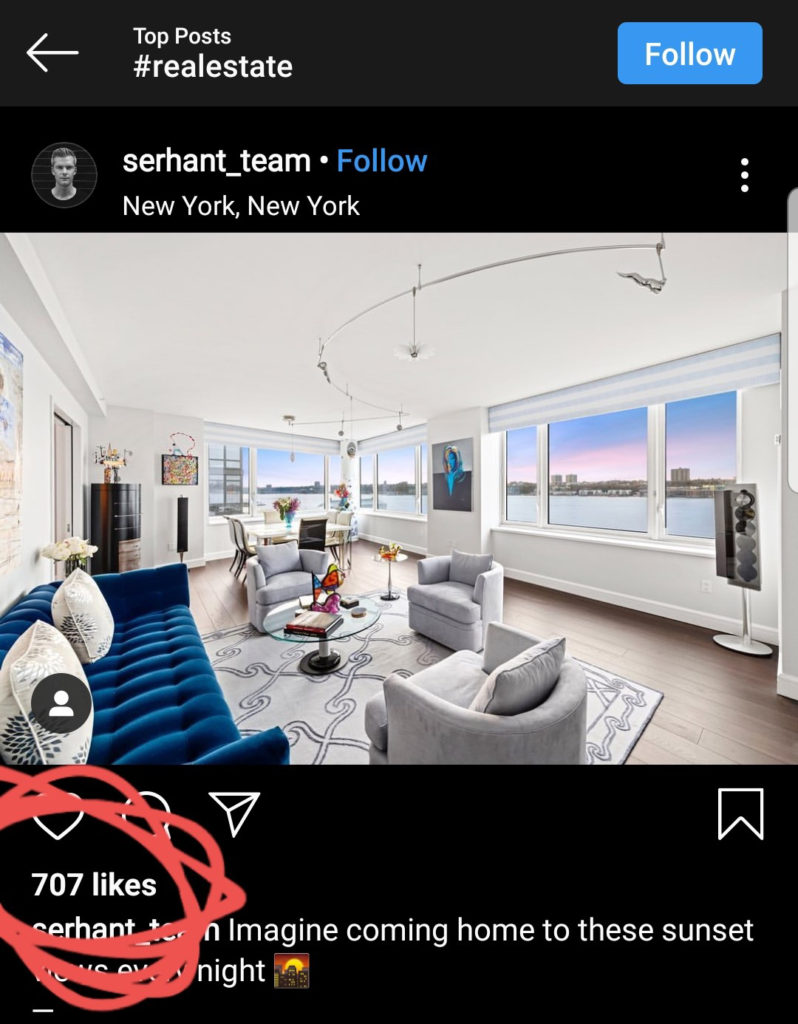
This post shows 707 likes. If your posts aren’t getting this level of engagement, it’s time to move on to another hashtag.
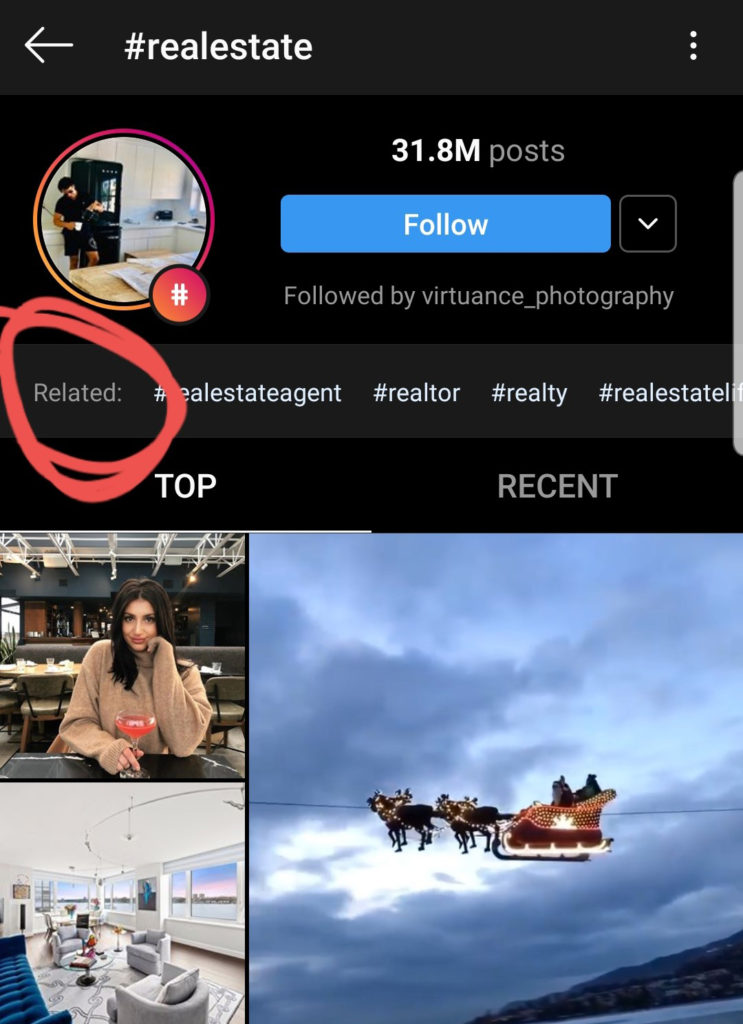
The “related” bar is a great place to find related hashtags. Select one to see its search results. Or, swipe right to see more options.
You can repeat this process to narrow down hashtags that will get you good exposure. The best ones will be hashtags that land you in the top posts. (Remember, this is based upon the number of likes your post gets.)
Use all tags possible
On Instagram, you’re allowed up to 30 hashtags per post. Use them all; it’s to your benefit. You won’t want to use the same 30 for each post, as Instagram may consider this spam-like activity and eventually restrict your posts’ visibility. However, you can use hashtags repeatedly. So, I recommend creating a list of hashtags that work for your brand and trying different combinations for each post.
Lastly, we have geotagging/location-tagging. This is where you tag the location where your photo was taken (neighborhood, city, state, or country). The more specific you go, the better.
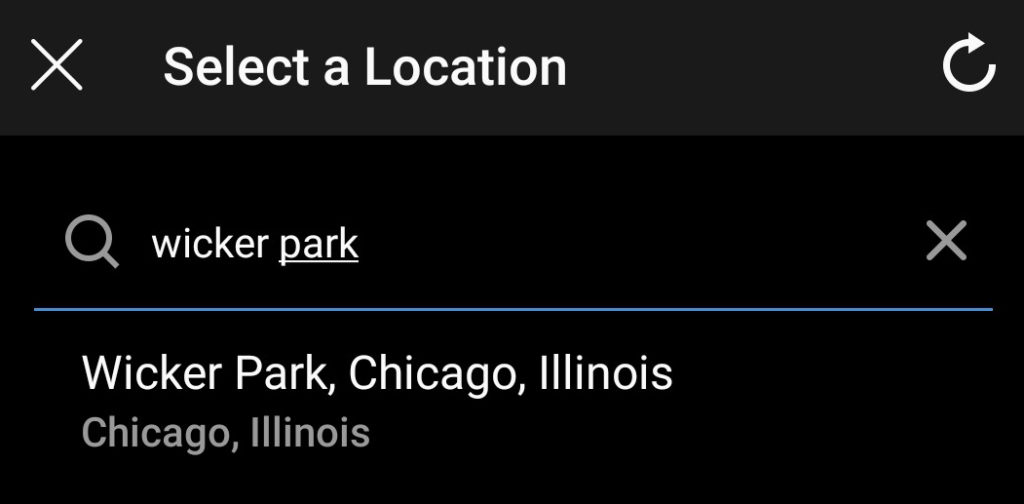
Think about it. If I were selling a home in Wicker Park, Chicago, I could just tag “Chicago” as the location. But Chicago has 2.7 million residents living in 77 diverse neighborhoods. To target my listing better, I’ll want to tag the neighborhood, Wicker Park, Chicago. That way, people searching for homes in Wicker Park will eventually see my post when they search by that location tag.

If you made it to the end, I salute you! We covered a lot today. As always, leave comments on what you found insightful and what you want more of. Until next time!
As the leading provider of real estate photography and visual marketing services, VHT Studios® equips clients with the best tools for selling listings. Visit VHT.com to order and learn more about the latest in real estate marketing.

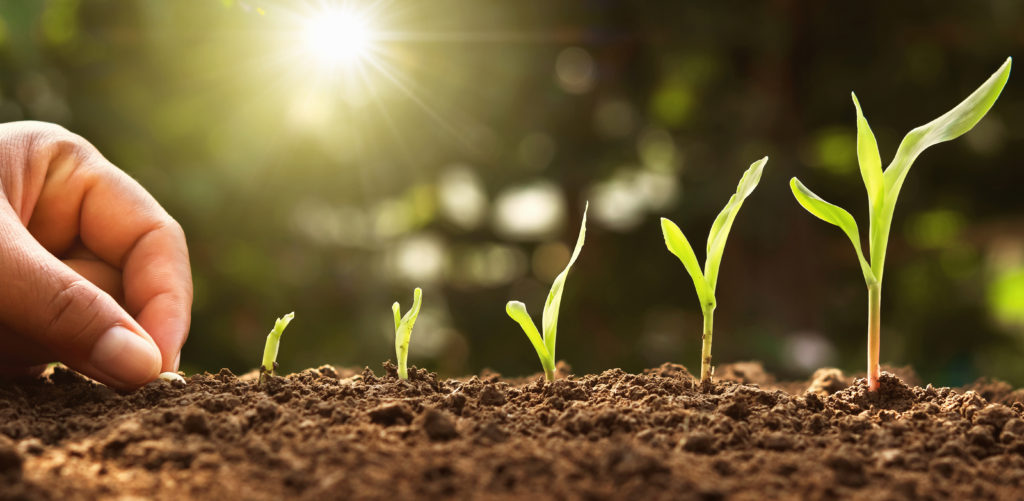
Monica Klein
December 24, 2019I found this blog insightful and informative! Very good
Brandon Perez
December 30, 2019Happy to hear! Thanks!
Eric DeNaut
December 29, 2019Very helpful information I can use right away!
Brandon Perez
December 30, 2019Absolutely! Best of luck!
Laura LePage
January 5, 2020Very useful information!
Brandon Perez
January 6, 2020Thanks! Happy to hear you found it useful!
Linda Kurecki
January 6, 2020Love this article, lots of great info!!
Brandon Perez
January 6, 2020Thanks! Glad it was helpful!
Vittoria@properties.com.
March 3, 2020Love the tip on how to find the right hashtags! It would be great to see some ideas on specific content that tends to get the most likes.
Dorthy Pastorelli
March 15, 2020Loads of great info!
Barbara Battaglia
March 22, 2020Great article